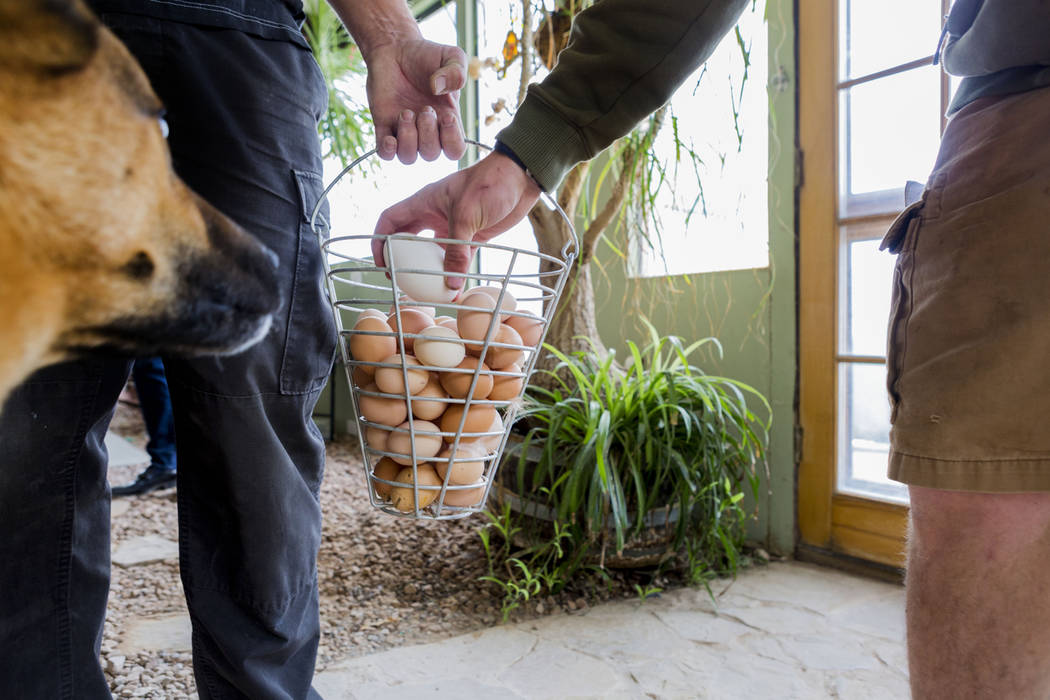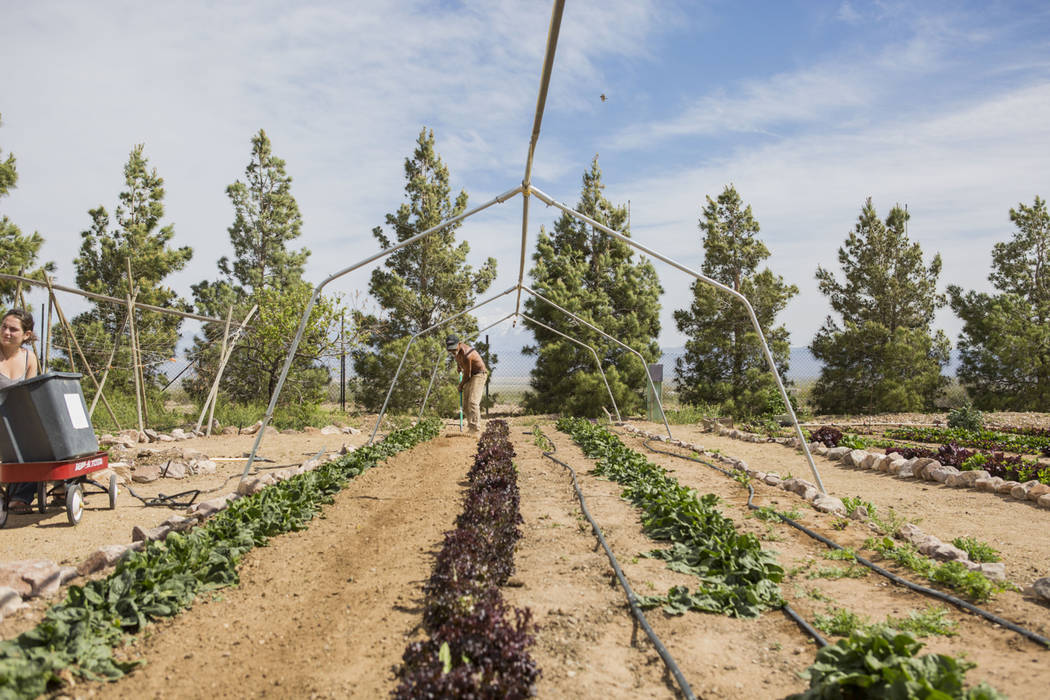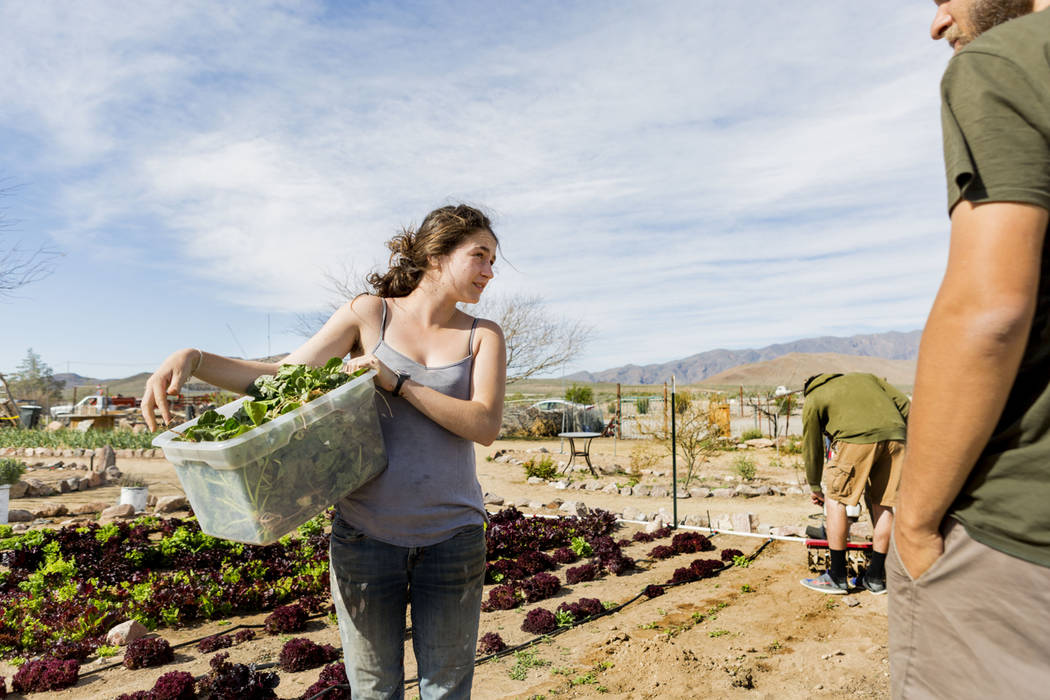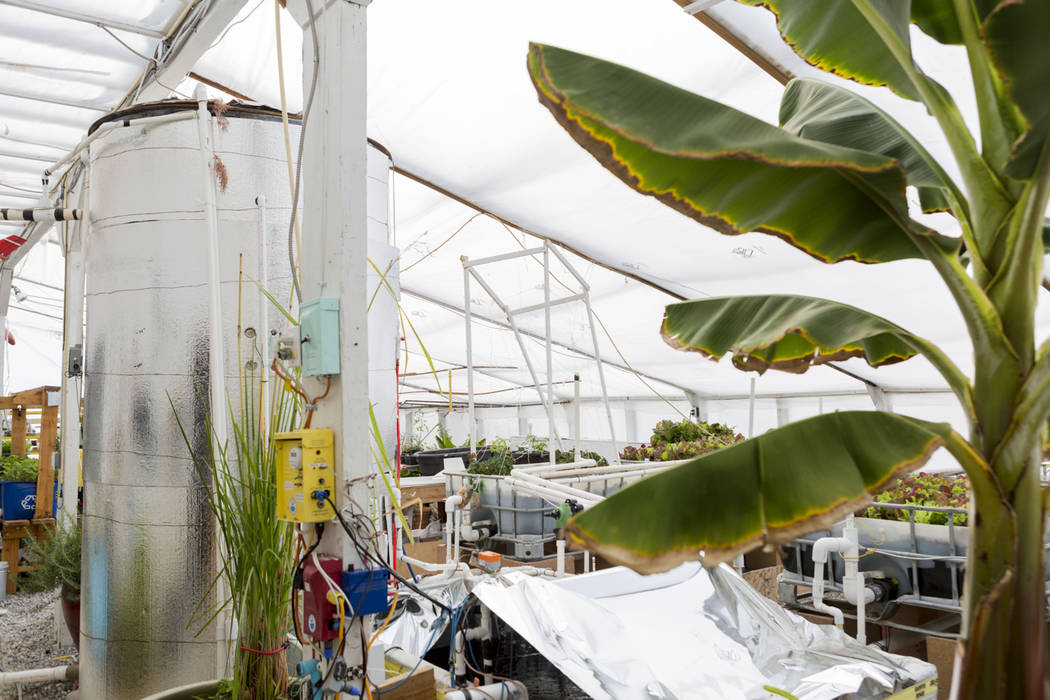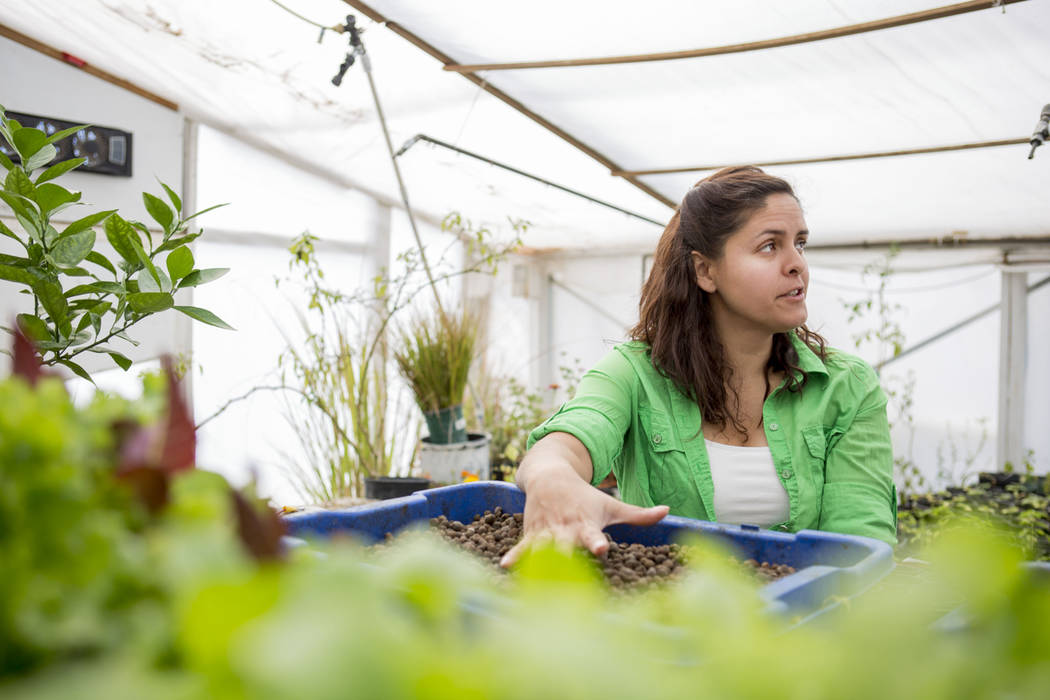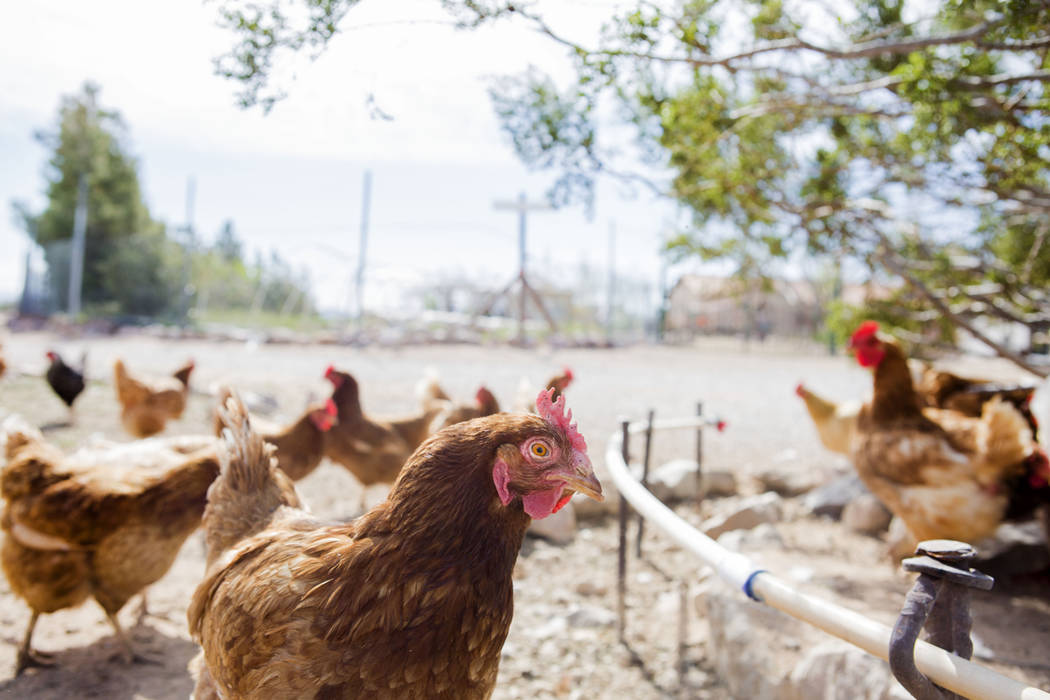Desert aquaponics farm delivers bounty to Las Vegas Strip
A howling wind sweeps through the desert valley in Tecopa, California, on a sunny weekday morning, kicking up sand and portending a storm.
But inside the greenhouse at the Desert Bloom Eco Farm, all is calm. Running water and classical music by 17th century German composer George Frideric Handel drown the sound of the wind.
Pumps are moving water from 10 tanks filled with live koi and goldfish to a few dozen containers standing chest high and filled with plants such as herbs, lettuce, tomatoes and spinach. There is even a banana plant. The water is then pumped back into the fish tanks.
In aquaponic farming, there is no dirt to fertilize, no weeds to pick.
In aquaponic farming, ammonia from fish waste is converted into nitrates that nourish plants. The plants, in turn, filter the water that returns to the fish tank.
Desert Bloom has a solar-powered, aquaponics greenhouse located amid the barren desert.
Serving the Strip
It might seem like a punchline by a comedian on the Strip. But this farm is delivering nearly $40,000 in vegetables a year to leading Las Vegas restaurants including Red Square and Herringbone, part of Hakkasan Group, as well as RM Seafood and RX Boiler Room.
American consumers desire for fresh, organic food untouched by chemical pesticides is nourishing start-up farming projects such as rooftop farms in New York City and Desert Bloom that would have seemed impossible several years ago.
Las Vegas’s transformation over the past decade also plays a major role in opening doors to small-scale farmers in the region.
Once a backwater for culinary innovation, casinos are focusing more and more on their gastronomy as a way to drive profits amid flat gaming revenue.
That is not to say that owner and Chief Financial Officer Claudia Andracki doesn’t face doubters.
Andracki, who will earn her master’s in business administration from the University of Nevada Las Vegas in May, says she just covers her costs at this point.
But the appreciation she gets from Las Vegas chefs Rick Moonen and Geno Bernardo keeps her forging ahead.
”To see their excitement about something I grow continues to encourage me to this day,” she says.
Andracki hopes to add another aquaponics greenhouse, which could cost anywhere from $50,000 to $100,000.
Green eggs
A green egg helped hatch Andracki’s idea to start a farming business.
Her husband, Steve, bought a house on 10 acres in Tecopa in 2002 for $18,000. The house was intended to be a weekend retreat from Pahrump. They raised a few Araucana chicken, which are known for their colored eggs, and some herbs.
They had no intention of doing anything more.
But during a visit to the Andrackis’ retreat in 2007, family friend Moonen saw a new take on a old dish in the Araucna eggs.
He used the green eggs to decorate a plate of bacon, asparagus and eggs at this RM Seafood restaurant at Mandalay Bay.
Over the ensuing months, Moonen encouraged Andracki to deliver some herbs to his restaurants. He then set up a meeting for the Andrackis with other chefs on the Strip.
“I had no knowledge of big production farming at the time,” said Andracki, who brought small samples of the herbs she was growing to the meeting.
Bernardo, then at Nove, called her back two months later. He wanted regularly deliveries.
That was enough encouragement to move ahead with a farm business.
Australian CDs
Over the next few years, the Andrackis would install a 500-foot well, acquire a tractor, Bobcat and rototiller. They would start ordering manure and compost from Pahrump and build a traditional greenhouse.
To ease picking and tilling, the Andrackis began to research raised plant beds. That’s when Steve came across a site about aquaponics, and they expanded in 2013, ordering educational CDs from an Australian aquaponics farmer and then started on building their own system.
It fit their desire to have an environmentally sustainable business.
Andracki later enrolled in the MBA program. She wanted help with developing her aquaponics business plan.
She also began accepting volunteers seeking experience on aquaponic farms. Aaron, 26, a physics graduate from Louisiana, and Leilah, 17, a high-school graduate from New Mexico, are helping her this April.
Most mornings, Andracki meets with her volunteers at 7 am to discuss the day’s tasks. They feed the fish, check the water pumps and solar battery, pick ripe plants, feed the chickens and collect eggs.
Three days a week, they gather the freshly picked food in Andracki’s 2011 Cheverlot Suburban. She then drives 55 miles to the Strip. After her deliveries on Tuesdays and Wednesdays, she goes to UNLV.
“Unlike other suppliers, I pick and deliver the vegetables the same day. So they last longer and generate less waste,” says Andracki, as strong winds bend trees outside the greenhouse.
Her master’s work consists of developing a business plan to build aquaponics systems and consult on their use. She sees potential buyers among those without home gardens, including those seeking to grow cannabis.
However, her passion is still mainly on the farm in Tecopa.
“Selling aquaponics systems will make our business more financially secure and allow me to focus more on the farm,” she explains.
Contact Todd Prince at tprince@reviewjournal.com or 702-383-0386. Follow @toddprincetv on Twitter.






